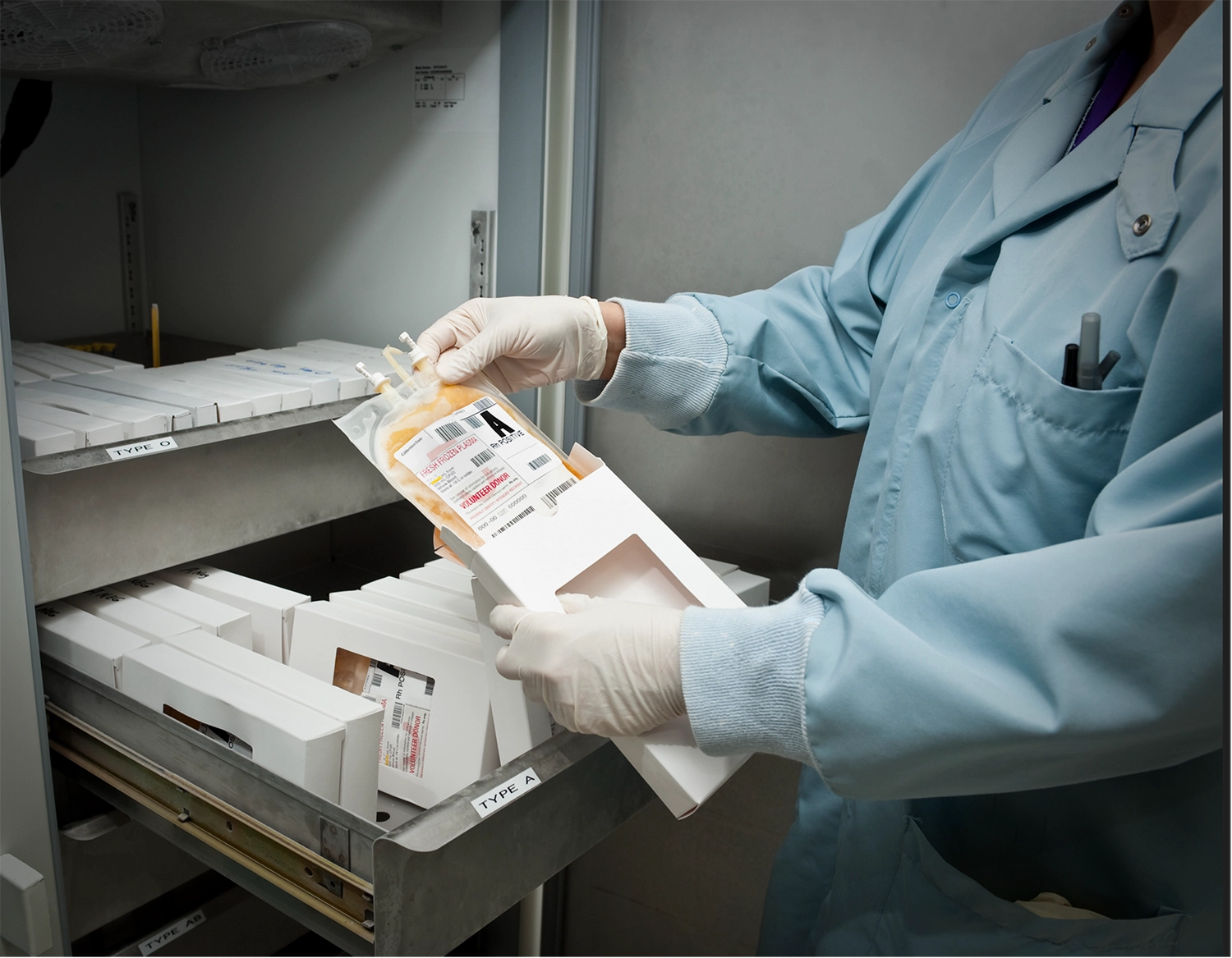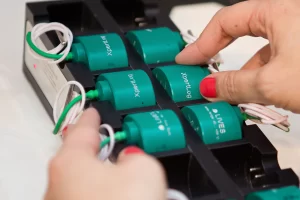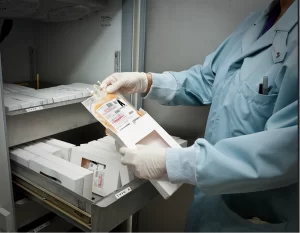All you would like to know about qualification of cold chain units
There are many pharmaceutical products and raw materials which require storage and transport at low temperatures within the cold chain units such us: fridge, freezers, transportation vehicles, to keep their quality properties prior to being received by the patient. How does a manufacturer or wholesaler assure high storage and transportation temperature standards? What are the main requirements for storage and transport of low temperature goods? What is qualification? This article will try to answer all these questions.
Low and ultralow temperature products
Let’s starts from the beginning. Why and what kind of products are most likely to be stored and transported in low and ultra-low temperatures? The answer is quite simple: all the products which are temperature sensitive, which means its pharmaceutical effect and effectiveness is based on the materials stability prior to patient administration. What kind of products and materials are we talking about? Mainly biopharmaceutical input and finished products, materials such as: cells, advanced therapy medical products [ATMPs] (cell, gene and tissue therapy), blood for transfusion requiring low and ultralow temperatures to prevent product degradation. In the case of cells and some ATMPs, low and ultralow temperatures slow down their metabolism. Low and ultralow temperature pharmaceutical products could also be included and are as follows: infusions, parenteral drugs, vaccines, and many, many more.
Cold Units and Cold Chain Units
Ok, we know what products and why they are required to be stored in such distinguished environmental conditions, so let’s talk about where to store them, and if there is any pattern that could divide them based on their temperature range? Below table 1. Summarising the types of cold chain controlled unts.
| Type of cold storage units | Temperature range | Product examples |
| Fridge | 2°C to 8°C (36°F to 46°F) | Active Pharmaceutical Ingredients (API), laboratory standards |
| Freezers, walk-in cold rooms, vestibule to – 40 clod room | -20°C (-4°F) | Laboratory materials, intermediates,
mRNA vaccines, stability samples. |
| Low temperature freezers and walk-in cold rooms | -40°C (-40°F) | |
| Ultra-low freezers | -80°C (-112°F) | |
| Cryopreservation unit | Below -80 °C (-112°F) [ solid CO2] -196°C (-321°F) [Liquid N2] | Master/Working Cell bank |
Table 1. Cold storage units classification
Above table divides cold storage units by storage temperature but the same conditions can be implemented during the transport. Both storage and/or transport can be part of a wholesalers cold chain but for the purposes of this article, any reference to cold chain will be restricted to the transport only and not wholesalers holding. Good examples of cold chain distribution could be a controlled container or a shipper containing the product to be distributed carefully packed with ice from location A to location B within an exact time.
But what exactly is cold chain? Cold chain is a kind of supply chain which uses cold chain units to distribute goods; in this case pharmaceutical or biopharmaceutical: products, raw materials, cells; around the world with constantly monitored temperatures within the qualified cold chain unit. As it was mentioned above the focus of this article will be on the transport aspect of cold chain distribution and its qualification.
Qualification of Cold Chain units
To use Cold Chain Unit(s) for pharmaceutical transport purposes the owner of the cold chain unit(s) needs to ensure that the conditions within the cold chain unit(s) are constantly monitored and the unit in of itself meets all the regulatory requirements. To meet the requirement and fulfil assured continuous product quality during transport, the cold chain unit(s) needs to be qualified. But what is qualification? Follow the International Standards Organization (ISO), to be more precise norm ISO 9000:2005 Quality management systems – Fundamentals and vocabulary, part 3.8.6 qualification process, qualification is: ‘Process to demonstrate the ability to fulfil specified requirements’. To freely explain, it is the process which checks, be it by a series of tests, if the utility, equipment (such as a cold chain unit), facility meet specified criteria. In the pharmaceutical industry a cold chain unit pre-qualification and qualification is managed via following stages and documents, described in table 2:
| Cold chain units qualification stage | Documents | |
| Design and planning | Qualification /Validation Master /Project Plan (QMP)P) or
(VM(P)P) |
|
| User Requirement specification (URS) / Functional Design Specification (FDS) | ||
| Design Qualification Report | ||
| Qualification | Installation Qualification (IQ) | Installation Qualification Protocol and report |
| Operational Qualification (OQ) | Operational Qualification Protocol and report | |
| Performance Qualification (PQ) | Performance Qualification Protocol and report | |
Table 2. Cold chain units qualification stage description
Design and planning of cold chain unit qualification
Even a long journey starts from the first step, an old Chinese proverb said. No different is with cold chain unit qualification. Our first step is planning. Good, documented planning is included in a high-level coordination document giving an overview for the qualification/ validation philosophy and approach, this is called the Qualification/Validation Master/Project Plan (QMP, VMP, QPP, VPP) for the Cold Chain Unit. If the plan is ready and approved, then the User Requirements Specification (URS) for the Cold Chain Unit can be prepared. The URS for the Cold Chain Unit should contain the most important and desirable quality, safety, operational and regulatory requirements.
Below table 3 shows examples of cold chain unit user requirements:
| User Requirement Number | Requirement description | Type |
| 1.1 | The Cold Chain Unit should maintain temperature conditions during transport between 2oC to 8°C. | Quality |
| 2.3 | Alarm annunciation for Cold Chain Unit should be audible and visual, acknowledging the alarm will silence the local annunciation. | Business |
| 7.5 | The Cold Chain Unit’s door must be provided with hardware to allow egress from the Cold Chain Unit in an emergency. | Safety |
Table 3. Examples of User Requirements for Cold Chain Units
The completed URS is sent to the cold chain unit manufacturer who is preparing an offer and a Functional Design Specification (FDS). FDS is the documented details of the manufacturer’s design of a Cold Chain Unit and must comply with the URS.
When the FDS for the Cold Chain Unit is received, it can be compared with the URS requirement and documented into a Design Qualification (DQ) report. This phase is verification of the proposed design of the Cold Chain Unit and ensuring FDS complies with URS, Good Manufacturing Practice (GMP), and is suitable for intended use.
Before the next phase of cold chain unit qualification and introduction of the cold chain unit on site, the Factory Acceptance Test (FAT) can be conducted. Intention of a FAT for a cold chain unit is to assure, by the series of tests and checks performed on the manufacturers site, that the cold chain unit complies with the manufacturers internal requirements and is released by quality control.
After successful completion of FAT tests, the cold chain unit can be brought onto the site where prior to Qualification, Site Acceptance Tests (SAT) can be performed to demonstrate the Cold Chain Unit compliance with the aforementioned FDS.
Cold chain unit Installation Qualification (IQ)
The main objective of Installation Qualification (IQ) is to provide documented evidence that all features of cold chain units are installed according to manufacturer’s recommendations and regulatory requirements. IQ is performed on the Cold Chain Unit and temperature control systems.
The typical Cold Chain Unit IQ includes (but not limited to):
- Verification of the correct installation of components, instrumentation, equipment, pipe work and services against the commissioning, specifications and conformance statements provided by service providers
- Verification of the correct installation against pre-defined criteria
- Collection and collation of supplier operating and working instructions and maintenance requirements
To document the above verification, the IQ protocol is pre-approved prior to execution and, if all pre-defined acceptance criteria have been met then the protocol can be post approved and closed. A final summary report is prepared, and the Cold Chain Unit can be released to the next stage which is Cold Chain Unit Operational Qualification.
Cold chain unit Operational Qualification (OQ)
On the Cold Chain Unit Operational Qualification stage, the cold chain unit is verifying if it can operate to the FDS and within URS upper and lower operational limits. The significant test for the Cold Chain Unit is an empty chamber temperature mapping test. The aim of this test is to check distribution and temperature uniformity inside the Cold Chain unit chamber. For this reason, temperature probes are utilised and located in the worst-case locations of the cold chain unit for an established amount of time. Depending on products, quality and business needs it could be 24 hours to 7 days. Probe locations and mapping period are defined and documented during a Risk Assessment Analyses performed prior to OQ protocol execution. Risk assessment should also identify testing required for OQ. The examples of common tests performed include (but not limited) to:
- Open door study – to document and demonstrate that after disruption of the cold chain unit’s temperature uniformity the system is capable of returning to required conditions within a time frame established during the study.
- Black out test/power off test – to verify if the cold chain unit is capable of returning to the accepted temperature conditions after a time in which power was lost. Other than that, this test is also performed to document the time it takes for a full system recovery.
If the Cold Chain Unit required additional OQ tests as a result of a Risk Assessment, the following can be performed: Defrost cycle test during temperature mapping, compressor switch over, compressor failure test or temperature penetration test.
The outcome from the Cold Chain Unit Operational Qualification should be a statistical analysis of temperature results and defined cold and hot spots in the unit. The analysis should identify points for consideration and requirements on locations for Cold Chain Unit Performance Qualification and Transport Route Qualification.
Cold chain unit Performance Qualification (PQ)
The aim of PQ tests is to challenge design and verify that the cold chain unit consistently meets every requirement from the URS in use.
The series of tests for Cold Chain unit Performance Qualification might be similar to the temperature mapping executed on the OQ. The main difference is that the cold chain unit on PQ is loaded -load variant and its impact to qualification should be assessed prior PQ study. For PQ purposes temperature mapping could be performed for loads which contain original packed product or could be specially created to mimic real product’s load and transport conditions e.g., empty boxes filled with material other than the product.
The cold chain unit can be fully loaded (full loaded), which means that it is loaded with minimum 80% of its capacity or partially loaded (partial loaded) – less than 80% of its full capacity. The following percentages are contractual and should be established during risk assessment analysis.
As it was mentioned before, the PQ tests are checking compliance with URS requirements in use. Therefore, temperature mapping is performed with the full loaded cold chain unit, during the standard product’s transport route and its time. Depending on Risk Analysis and the product’s specification, the PQ phase can be performed on more than one standard route. In some cases, to demonstrate worst case conditions and its lack of impact to the transported product the longer and more demanded than standard operation route (route with loading/unloading phases, crossed climatic zones etc.) is chosen to be executed. The describe approach can be performed under PQ protocol or within additional qualification/ validation phase known as Transport Route Qualification / Validation.
It is required that the above temperature mapping and additional tests (if any required) are performed at least during two extremal seasons of the year (dependent of climate zone); e.g.: winter and summer. The aim of this approach is to demonstrate no impact of external environment to the conditions inside the cold chain unit and to the product.
The outcome from the Cold Chain Unit Performance Qualification should be a statistical analysis of temperature results and defined cold and hot spots inside the cold chain unit. Based on analysed temperature results the final quantity and location of monitoring probes to be used on a daily basis should be identified and implemented in the cold chain unit.
That is all what I would like to share with you. If you would like to know more or need support with qualification of your cold chain unit, please do not hesitate to contact FQS LTD. Your allies with cold chain unit qualification!
Article based on:
- Good Distribution Practice Guidelines (2013/C 343/01), available 14 December 2022 on-line at:https://eurlex.europa.eu/LexUriServ/LexUriServ.do?uri=OJ:C:2013:343:0001:0014:EN:PDF
- ISPE Good Practice Guide: Controlled Temperature Chamber Mapping and Monitoring
- ISPE Good Practice Guide: Packaging, Labelling, and Warehousing Facilities
- World Health Organization (WHO), WHO good distribution practices for pharmaceutical products, Technical Report Series, No. 957, 2010







